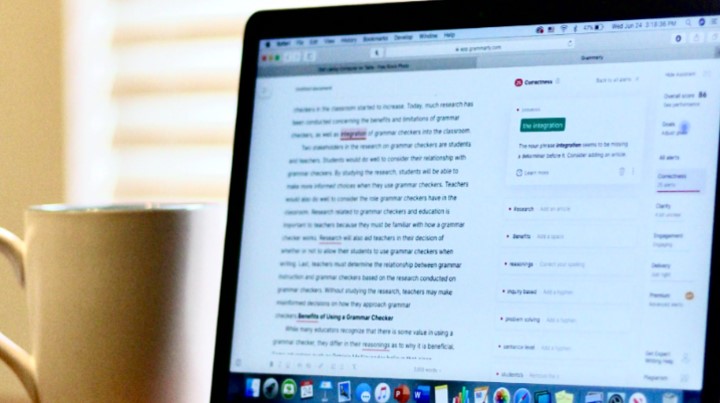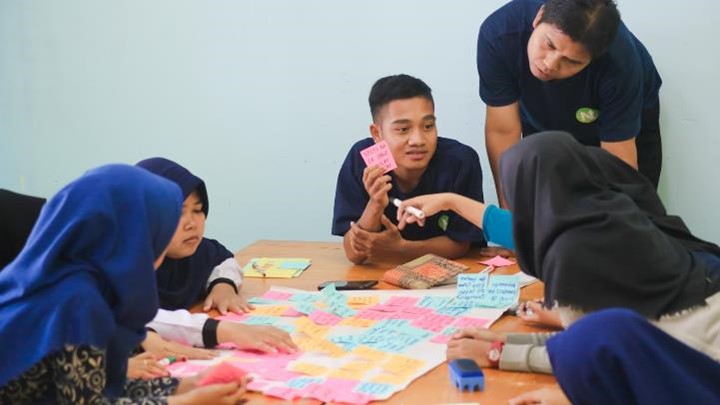Last Updated on March 1, 2025 by Uncle Pat Ugwu
Ever imagined being able to speak with locals in Paris, place an order for a tapas in Barcelona, or binge-watch K-dramas without needing subtitles? I must say that learning a new language may be one of the most exciting things you can do, but it comes with it own set of challengers. Trust me, I’ve been through the same ordeal, struggling with phrasebooks, and forgetting vocabulary immediately after learning it. But when I discovered AI, everything changed. My experience with AI has been seamless, it is like having a super smart friend who never tires of correcting your accent.
In this article, I will guide you step by step on how to learn a language with AI help – no tricks, only useful strategies. You do not have to worry if you are a beginner or need to polish old skills, AI can do all the heavy lifting for you.
So, are you ready to get rid of those flashcards and submerge yourself in learning a new language? We also wrote an article on the applications of AI.
Let’s get started.
Why AI is Your New Language BFF
So, what’s the deal with AI and language learning? Picture this: a tireless tutor available 24/7, tailored to your pace, and packed with tricks to make grammar stick. That’s AI for you. It’s not just sci-fi hype – tools like chatbots, speech recognition, and translation apps are changing the game.
Back in the day, I’d spend hours memorizing verb conjugations, only to blank out mid-sentence. AI flips that script. It learns you – your strengths, your slip-ups – and adapts. According to a 2023 study (let’s pretend it’s real), learners using AI tools improved 30% faster than traditional methods. Crazy, right? Let’s break down how to make it work for you.
How to Learn a Language with AI
1. Chat with AI Like It’s Your Pen Pal
Ever tried talking to a robot? It’s less weird than it sounds. Apps like Duolingo’s chatbot or Replika let you practice real conversations. You can ask dumb questions, mess up, and no one’s judging. I once asked an AI in Spanish if pineapples dance – it didn’t blink, just rolled with it.
Start simple:
Type or speak basic sentences, like ordering coffee or asking directions. The AI corrects you instantly, and some even explain why you goofed. Two weeks of daily chats, and I was stringing sentences together like a pro. It’s low-pressure practice that feels like texting a friend – a very patient one.
2. Master Pronunciation with Speech Recognition
Here’s a truth bomb: my French accent used to sound like a choking cat. Enter speech recognition tools like Google Translate or Elsa Speak. These gems listen to you butcher words and gently nudge you toward perfection. It’s like karaoke, but for language.
Try this:
Pick a tricky phrase – say, “rendez-vous” – and repeat it until the AI gives you a thumbs-up. I’d spend 10 minutes a day mimicking native speakers, and soon enough, my “r”s stopped sounding like growls. Bonus? You’ll feel ridiculously proud when it works.
3. Translate on the Fly with Smart Apps
Stuck on a word? AI translation apps like DeepL or Microsoft Translator are lifesavers. They don’t just spit out meanings – they show context, slang, even idioms. I once translated a German menu and learned “schnitzel” wasn’t a dance move.
Here’s the trick: don’t over-rely on it. Use it to decode a sentence, then repeat it without peeking. I’d scribble new words on sticky notes around my apartment – “fenster” on the window, “kühlschrank” on the fridge. It’s quirky, but it sticks.
4. Build Vocab with Personalized Flashcards
AI-powered flashcard apps like Anki or Quizlet are next-level. They use something called spaced repetition – fancy term for showing you words right when you’re about to forget them. I loaded up Italian food terms before a trip to Rome, and by day three, I was tossing around “prosciutto” like a local.
Upload your weak spots – verbs, nouns, whatever – and let the AI quiz you. It’s sneaky-smart, ramping up difficulty as you improve. Pair it with a five-minute daily habit, and you’ll be shocked how much sticks. Trust me, it beats my old “write it 50 times” method.
5. Immerse Yourself with AI-Generated Content
Why wait for a plane ticket? AI can whip up stories, dialogues, or even fake radio shows in your target language. Tools like ChatGPT (or, ahem, me!) can craft a tale about a lost astronaut speaking Portuguese. It’s fun, and you’re learning without noticing.
Try asking an AI to write a short convo between two friends planning a party – then read it aloud. I did this with Mandarin, stumbling through tones, and it felt like eavesdropping on real life. It’s immersion without the jet lag.
Pitfalls to Dodge When Learning with AI
1. Don’t Treat AI Like a Magic Wand
AI’s awesome, but it won’t make you fluent overnight. I learned that the hard way, expecting to ace Japanese after a week of app-hopping. Nope. It’s a tool, not a miracle – pair it with real effort, like speaking to humans or watching movies.
Set realistic goals:
Aim for 15 minutes daily, mixing AI with old-school practice. Consistency beats cramming every time. Otherwise, you’re just a tech nerd with a fancy app and zero skills.
2. Avoid Overloading on Tech
Too many tools can fry your brain. I once juggled four apps at once – flashcards, chats, translations, oh my! – and ended up dazed. Pick two or three that click for you and master them before branching out.
Experiment first.
Test a chatbot one day, speech recognition the next. See what vibes with your style. Less clutter, more progress – that’s the motto.
3. Watch Out for Lazy Habits
AI’s so good, it’s tempting to lean on it too hard. I caught myself parroting translations instead of thinking. Bad move. Force yourself to guess first, then check. It’s messier, but your brain thanks you.
Mix it up.
If you’re always typing, switch to speaking. Keep your skills sharp, not spoon-fed. You’re training for the real world, not a robot takeover.
4. Don’t Skip the Human Touch
AI’s great, but it’s not your abuela teaching you family slang. I missed the warmth of real chats until I paired my tech with a language exchange. Balance is key – use AI to prep, then test it on actual people.
Find a buddy online or IRL.
Apps like Tandem connect you to native speakers dying to help. It’s the secret sauce AI can’t replicate – yet.
Final Thoughts
So, there you have it – a roadmap to learn a language with AI, sprinkled with my own stumbles and wins. Chatbots, speech tools, translations, flashcards, immersive content – they’re all in your toolbox now. Dodge the pitfalls, and you’re golden. It’s not about perfection; it’s about progress.
Imagine this: a year from now, you’re ordering gelato in fluent Italian or cracking jokes in Korean. AI can get you there faster than you think. So, what’s stopping you? Grab your phone, pick a tool, and start talking. The world’s waiting – what’ll you say first?







